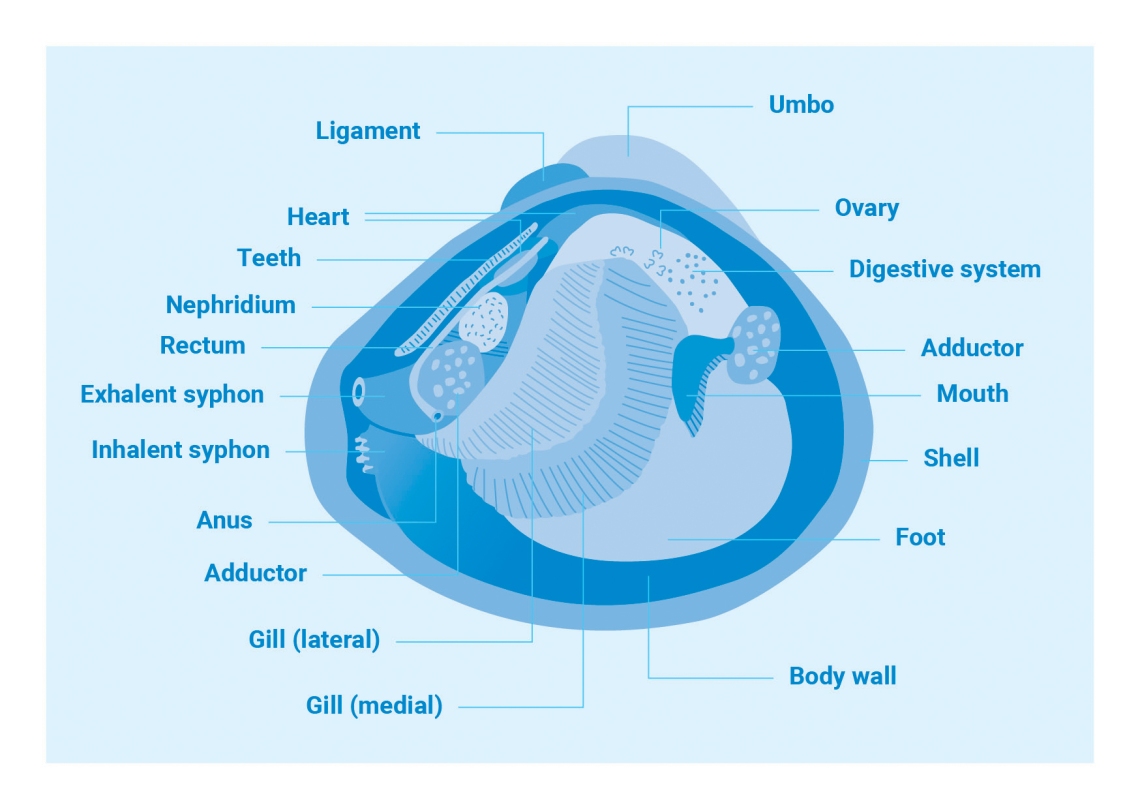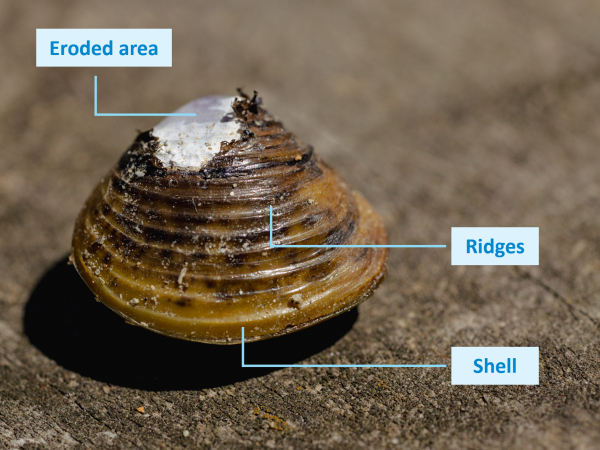The invasive gold clam is native to eastern Asia and is widely established in North and South America and Europe. In New Zealand it was first discovered in the Waikato River in May 2023 at Bob's Landing, within Lake Karāpiro. It has been declared an unwanted organism under the Biosecurity Act.
Shell
The hard, olive, or yellowish to black-brown outer shell (periostracum) with raised ridges provides protection from predation, drying out and physical damage. As the clam ages the shell becomes darker in colour.
Umbo
The first-formed (oldest) part of the shell.
Body wall
The fleshy layer inside the shell that is typically white-bluish white in colour.
Syphons
The gold clam has two extendable siphons. As ‘filter feeders’ this is how they eat – the inhalant siphon inhales the freshwater, and the exhalant siphon expels it.
Foot
The muscular foot helps the gold clam to move around, and burrow into the lake or waterway substrate and pedal feed on detritus in sediment.
Ovary
Adult gold clams are simultaneous hermaphrodites (both male and female) that are capable of both cross and self‐fertilisation. Egg fertilisation is internal. It takes only one individual to start a population. A single adult can produce 1,000 to 100,000 juveniles per year (depending on water quality and temperature)
Gills
The gold clams lateral and medial gills filter freshwater for oxygen as well as other plant and organic matter for food. The gold clams also brood their microscopic larvae within the gills (blue lines in diagram) where they transform into juveniles in 4-5 days (temperature and water quality dependant).
Heart
The gold clam heart has three chambers: two atria and one ventricle.
Ligament and adductor muscles
These muscles allows the gold clam to open and close its shell.
Teeth
Helps the clam valves align while closing (stops them slipping)
Mouth
Sorts (cilia) and processes (labial palp) food.
Digestive system
Here is where food is absorbed; includes large and small intestines.
Nephridium
The shellfish version of kidneys that filter the body’s waste products.
Rectum and anus
The system where food waste passed out of the shellfish.


